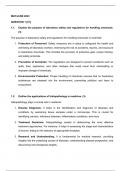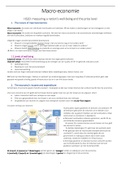Tentamen (uitwerkingen)
"BMI3702 Biomedical Techniques: 10 Years of Solved Past Exam Papers for Comprehensive Preparation"
- Vak
- Instelling
Welcome to the ultimate resource for BMI3702 Biomedical Techniques! This comprehensive package provides a decade's worth of solved past exam papers to aid your preparation and ensure success in your studies. Inside this meticulously compiled collection, you'll find detailed solutions and explana...
[Meer zien]





